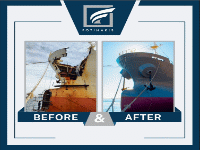U.S. Container Imports Face Decline Amid Rising Tariffs and Shipping Costs
Despite a promising start to 2025, U.S. container ports are preparing for a downturn in shipping volumes due to new tariffs and proposed fees. According to John McCown’s Container Volume Observer report, the top ten U.S. container ports experienced a 9.6% increase in inbound volume in April, following an impressive 11% rise in march. However, this growth is not enough to match last year’s robust annual increase of 15.2%.
McCown predicts that by the end of 2025, we could see a double-digit drop in annual volume compared to the previous year, largely due to tariffs from the Trump Administration and new shipping fees suggested by the USTR (United States Trade representative). Notably, China contributes around 40% of containers entering the U.S., and while recent tariff reductions from an eye-watering 145% down to just 30% for three months offer some relief, additional tariffs on imports from other nations will likely exacerbate volume declines.
“Expecting around a 15% impact seems reasonable,” McCown states.He adds that if higher tariffs had remained intact, we might have faced an even steeper decline—upwards of 25%. Looking ahead beyond this temporary tariff period introduces uncertainty; future policy changes will play a crucial role.
“Tariffs and proposed shipping fees are steering container traffic into uncharted territory,” he explains. Given that these trade routes represent over one-quarter of global container miles traveled, any shifts here will resonate worldwide.
The initial effects will hit West Coast ports first come May while East Coast and Gulf facilities may feel it through June. After an expected dip during May and early June, McCown foresees a brief rebound mirroring earlier trends before another potential decline sets in.
Complicating matters further is the revised ship fee set for implementation in October; comments on this plan were due by mid-May. McCown warns that adjustments could still occur: “This fee acts like another form of tariff—it’s blunt and somewhat nonsensical.”
He emphasizes how interconnected container shipping systems are: “Any disruption creates inefficiencies and extra costs.” As these challenges unfold within the industry landscape, he suggests stakeholders should view impacts as part of a broader spectrum affecting both commerce and inflation—where increases often lead hand-in-hand with decreases elsewhere.
As summer approaches, notable consequences may emerge for those who have so far been shielded from these shifts—a reminder that change is constant within global trade dynamics!
Content Original Link:
" target="_blank">



















































